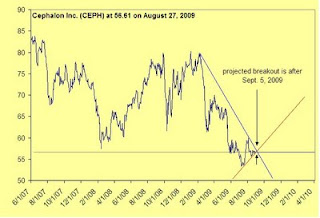When I came up with the idea of writing about stock analysts, I thought about many of the negatives that I've observed over the years. After all, I've seen analyst ratings go from a buy to a hold overnight. In other instances, I've seen ratings on stocks lowered the same day that the stock was crashing. Analyst ratings never seemed to match up with the concept of offering foresight or depth of knowledge.
In doing my research on stock analysts, I realized that instead of focusing on those who got it wrong in their upgrades and downgrades, I would try to find those who got it right. This turned out to be like searching for a needle in a haystack. So many analysts were unclear on their ratings that I couldn't really use recommendations like neutral, accumulate, market perform and outperform.
Additionally, I couldn't use buy recommendations since they were a dime a dozen and possibly had more to do with investment banking relationships. For this reason, I was forced to track only the stock recommendations that had sell ratings. Sell recommendations comprise only 5% of all ratings issued. The performance of such ratings are easier to track with clear instructions of what to do with the stock and little in the way of issues like conflict of interest with a buy rating.
What I found was enlightening and refreshing. I found the
sell recommendation of Select Comfort (
SCSS) issued on August 30, 2007 by Matrix USA, LLC. Naturally, SCSS fell from the high of $17.09 to the most recent 52-week low of $0.19. The decline equaled 98.9% and has only risen to $3.25 as of August 28, 2009.
Clearly I was shooting ducks in a barrel because I went straight to where I knew the market was topping out to find clear sell recommendations. However, it is precisely the top of the market where few analysts are willing to issue outright sell recommendations.
When I looked for a little background on Matrix USA, I learned that it had already been a leader in quality
buy and sell recommendations. Unfortunately, you cannot find Matrix USA LLC any longer but the former managing director Daniello Natoli was found to be working at
EVA Dimensions LLC. Stern Stewart, Founder and CEO of EVA Dimensions, is the author of the book
Quest for Value which outlines the principles behind economic value added (EVA) measurements for publicly traded companies. EVA is the model that helped Matrix USA LLC build a successful string of buy and sell recommendations.
Apparently, Matrix USA LLC no longer exists, however the ability to issue solid buy and sell recommendations makes the method that they utilized well worth investigating. This would be one time I could honestly say that the book Quest for Value might be a good "investment." Touc.
Please revisit
Dividend Inc. for editing and revisions to this post.




